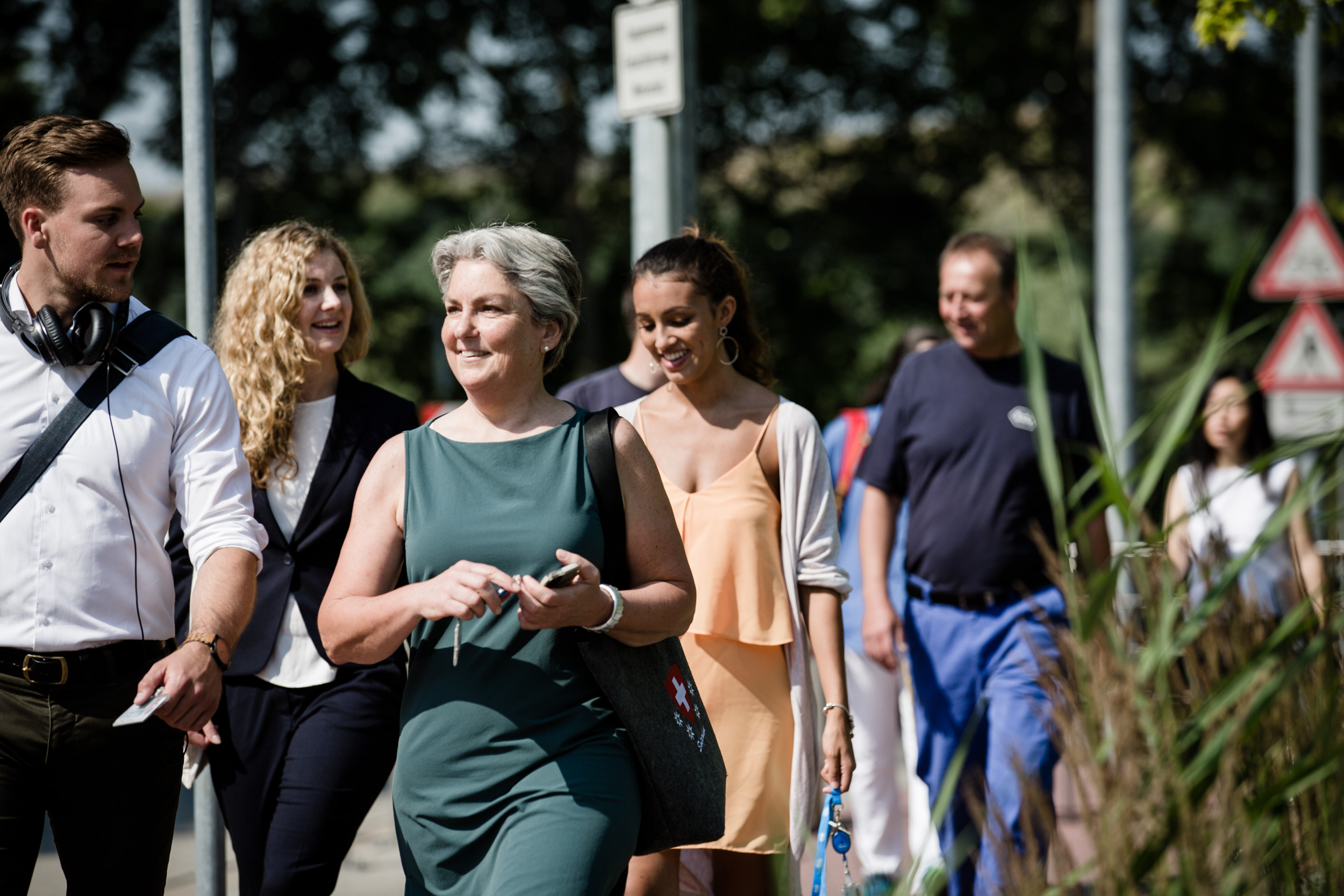
Walking experience
Encourage people to walk by improving pedestrian connections, promoting public space life and well-being.
Down“People ignore design that ignores people.”Frank Chimero - Designer

Outdoor activity contributes to the vitality of the site and to the health of its users. By designing a dynamic urban environment that invites users to walk and participate in community events, there is more chance for the natural cross pollination of ideas through spontaneous interaction.
To do this:
• Provide pedestrian spaces that are safe, multi-functional, sustainable, and engaging.
• Incorporate seating that can be reconfigured to offer eating areas, large event spaces, or more intimate areas.
Design for experiences
- Promote connectivity between buildings and open spaces by designing accessible and easy-to-navigate meandering routes linking diverse activity areas.
- Create traffic-free public squares and safe cycle routes.
- Planning for a gathering space at a main building’s access point supports intuitive wayfinding and orientation.
- Wide pedestrian corridors emphasize the walking experience of the site, therefore, plan for pedestrian paths of different widths and extensions to create a rhythm and provide spaces with diverse character.
- Increase the quantity and frequency of seating throughout the area and incorporate plantings that thrive in shady locations.
Key to Walking experience
- Prioritise the pedestrian experience by promoting connectivity between buildings and open spaces.
- Support intuitive wayfinding and orientation.
- Arrange seating and planting areas to be intertwined with user activities.